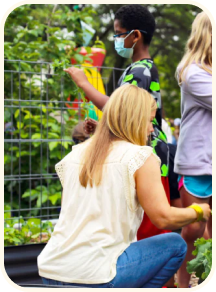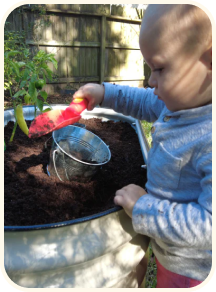Say What? Does Talking to Your Plants Really Help?
If you’ve ever thought about having a long talk with your house plants, you’re not alone. (Or maybe you are and that’s why you’re seeking some leafy companionship.)
All kidding aside, for centuries people have been debating whether carrying on a one-sided conversation with your plants and crops will help them thrive, and the idea has generated a fair amount of support.
For example, when trees.com surveyed 1,250 people in 2022, half said they talk to their trees or plants; 65% of that group said they do it because they believe it encourages growth.
Some advocates think talking to their plants provides them with additional carbon dioxide, which aids in photosynthesis production. However, scientists say it would take a whole lot of human speech — we’re talking several hours a day — to have much of an effect.
Others think that communicating with them helps plants feel nurtured.
Regardless of our personal feelings or even experiences — during the Covid lockdowns, there was a spike in people saying their plants were faring better, many figuring it was because they were being spoken to — the science remains split on the topic.
Vibrations seem to make a difference, but human voices? The relationship between giving your plants a pep talk and seeing results isn’t quite so clear, at least in botanic terms.

Only corn has ears
German philosopher Gustav Theodor Fechner certainly didn’t invent the idea of talking to plants, but he popularized the concept in 1848 with his book “The Soul Life of Plants.”
Fechner believed that plants were more complex than they’d been made out to be. Not only did he think plants have a “soul,” or inner life, he felt they might experience sensations and respond to their environments, including benefiting from human conversation.
He didn’t, however, suggest that plants experience human emotions. In other words, if your dracaena looked droopy, it was probably because it lacked water, not company.
And of course, plants don’t have ears.
So how would they hear us in the first place?
Good vibes
According to studies on how sound affects plant growth, it’s not so much about hearing voices as it is about sensing noises in the form of vibrations.
About 20 years ago, the journal Ultrasonics reported the results of a study that looked into whether different sounds, including classical music, birdsong, water, and insects, had any effect on the growth of Chinese cabbage and cucumbers.
As it turned out, they definitely did: Researchers found that sound exposure significantly increased oxygen uptake while also boosting the levels of growth-stimulating polyamines. Polyamines are small, organic molecules inside all living organisms. In plants, they’re found everywhere from the roots to the leaves. Their job is to help plants grow and develop properly.
What’s more, it didn’t matter whether the plants were seedlings or mature, or what sound they’d been exposed to; both polyamines and oxygen went up.
Another study, this one in 2015, also suggested more than a casual link between sounds and healthy plants. As reported by the International Journal of Integrative Sciences, Innovation and Technology, when researchers exposed marigold and chickpea plants to light Indian music, they grew better, and were taller and fuller than the control group.
How do we know that the difference is caused by vibration rather than an affinity to Beethoven or a sitar serenade?
Former head of Penn State’s horticulture department Rich Marini answered that question in an interview for the university.
He said that plants evolved to respond to vibration as a way to help them survive in windy environments. Specifically, wind-blown plants produce more ethylene, which, among other things, suppresses growth. The plants are shorter with thicker stems, which makes them more resilient to windy conditions.
"Wind or vibration will induce changes in plant growth. Since sound is essentially vibration, my guess is that vibration is causing a response," Marini said.
Marini’s supposition has been supported by other scientists, who have even found that plants react more favorably to low levels of vibrations that to harsher, stronger vibration, meaning head-banging, heavy metal is not their jam.
There’s still room, however, for opposing thoughts.
In a study by the Royal Horticultural Society, 10 gardeners read to a tomato plant each day for a month. Thirty days later, the plants that had been read to were larger than those in the control group. Perhaps even more interesting: the tomato plants who had female readers were taller than those read to by deep-voiced men.
TLC for your plants – and you
Science aside, there may be a practical reason why house plants — shielded from the wind and not subjected to the vibrations caused by swarming insects — do better when they are talked to: they’re just being better cared for in general.
After all, whether you’re leaning in to tell your plant about your day or to compliment them on their foliage, you’re close enough to see if they need water, have soggy soil, need a good spritz of fertilizer, or could stand to have their leaves dusted. More care makes for happier, healthier plants. And if talking to your plants relieves stress or gives you an emotional boost, well, that’s good, too.
But if they start talking back, either you’ve got a Little Shop of Horrors situation on your hand or something completely different. And that’s more than a gardening blog can help with.





























Leave a comment